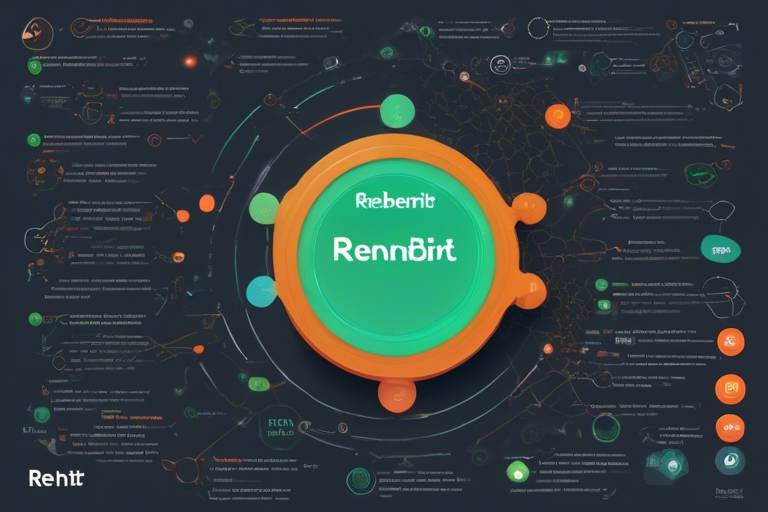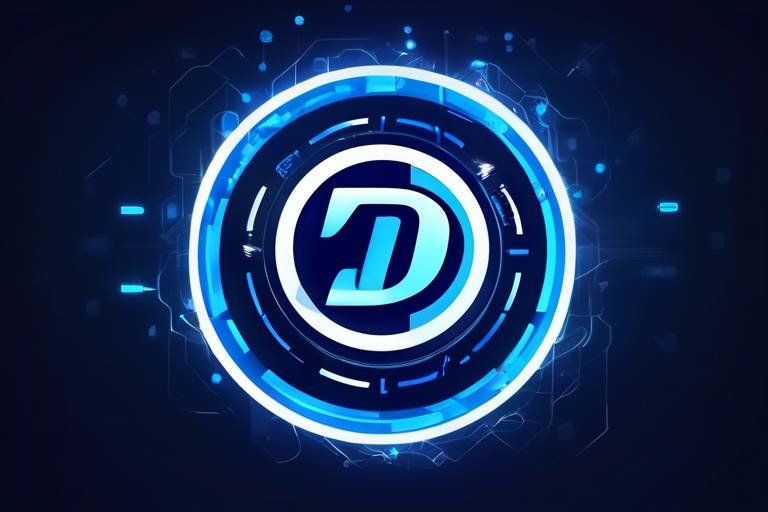Wrapped Ether (WETH) - Understanding Wrapped Assets
Wrapped Ether, commonly known as WETH, is a fascinating concept that has gained significant traction in the world of cryptocurrency. If you're diving into the Ethereum ecosystem, understanding WETH is crucial, as it represents a bridge between traditional Ether (ETH) and the vast array of decentralized applications (dApps) that utilize the ERC-20 token standard. But what exactly does that mean for you as a user? Well, let's unpack this!
At its core, WETH is an ERC-20 token that mirrors the value of Ether on the Ethereum blockchain. This means that one WETH is always equivalent to one ETH. However, the magic of WETH lies in its ability to enhance the usability of Ether within decentralized finance (DeFi) protocols. Imagine trying to fit a square peg into a round hole; that’s what using ETH directly in many dApps feels like. WETH is the solution that allows for seamless integration, making it easier for users to interact with various platforms.
In a world where interoperability is key, WETH shines brightly. By wrapping ETH in a smart contract, users can convert their Ether into WETH, opening up a treasure trove of opportunities. This process not only makes it easier to participate in DeFi activities such as lending, borrowing, and trading but also ensures that users can maintain the value of their assets while enjoying the benefits of the ERC-20 standard.
Now, you might be wondering, "How do I even get WETH?" Well, it's quite simple! Users send their ETH to a smart contract, which then issues WETH in return. This process is reversible, meaning you can convert your WETH back to ETH whenever you wish. This flexibility is a game-changer for asset management, allowing users to navigate the crypto landscape with ease.
To summarize, WETH is not just a token; it's a vital component of the Ethereum ecosystem that enhances the functionality and accessibility of Ether in the world of decentralized finance. With WETH, users can tap into a wealth of opportunities that were previously out of reach, making it an essential asset for anyone looking to maximize their crypto investments.
- What is the main purpose of WETH? WETH allows users to utilize Ether in decentralized applications that require ERC-20 tokens, enhancing usability and interoperability.
- Can I convert WETH back to ETH? Yes, the process is reversible, allowing users to convert WETH back to ETH whenever needed.
- Why should I use WETH instead of ETH? WETH offers advantages such as compatibility with DeFi protocols, increased liquidity, and lower transaction fees, making it a preferred choice for many users.
- Is WETH safe to use? As with any cryptocurrency, it's important to use secure wallets and platforms. WETH itself is a widely accepted token in the Ethereum ecosystem.
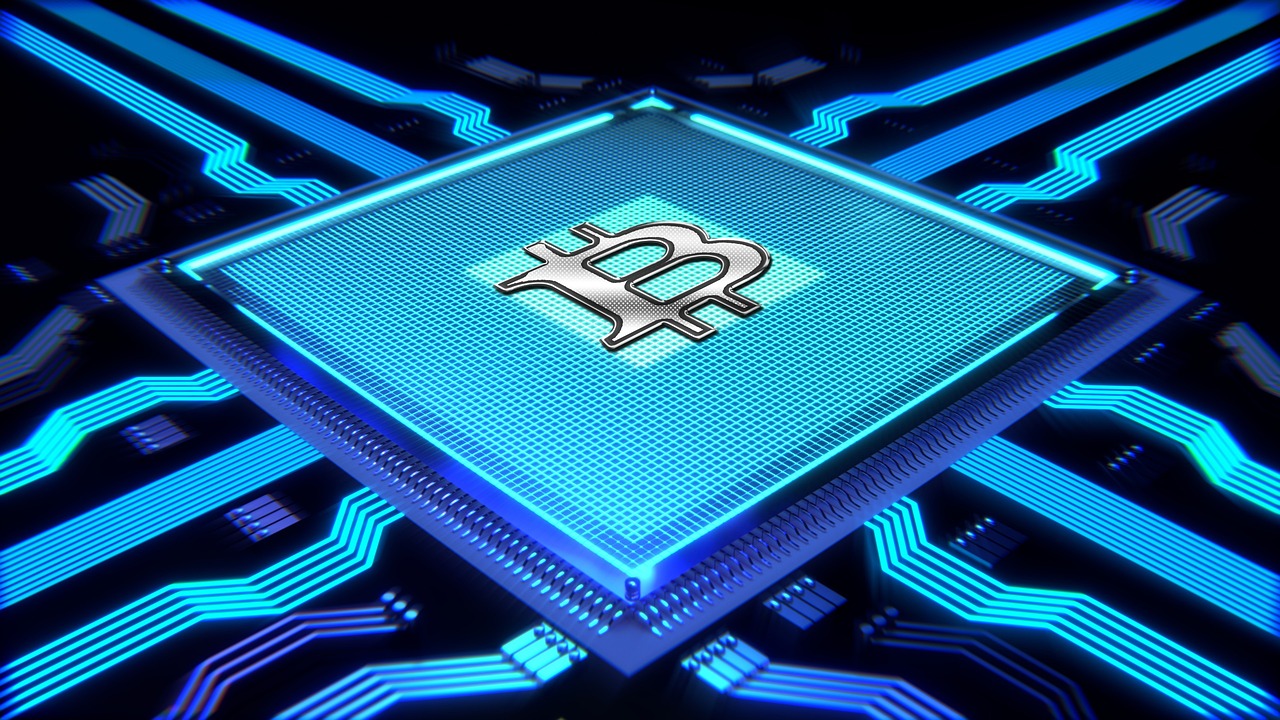
What is Wrapped Ether?
Wrapped Ether (WETH) is an ERC-20 token that acts as a bridge between the native cryptocurrency of the Ethereum blockchain, Ether (ETH), and the broader ecosystem of decentralized applications (dApps). At its core, WETH is designed to enhance the usability of Ether by wrapping it in a format that is compatible with the ERC-20 standard. This transformation is crucial because it allows ETH to interact seamlessly with various dApps, protocols, and decentralized finance (DeFi) platforms that primarily operate using ERC-20 tokens.
Think of WETH as a ticket to a concert. While the concert venue (the Ethereum blockchain) allows entry with a general admission ticket (ETH), certain exclusive areas (dApps and DeFi protocols) only accept specific tickets (ERC-20 tokens). By wrapping ETH into WETH, users gain access to these exclusive areas, unlocking a world of opportunities within the Ethereum ecosystem.
To put it simply, WETH is more than just a token; it is a gateway that facilitates transactions, lending, borrowing, and trading within the decentralized finance landscape. The process of wrapping Ether involves sending ETH to a smart contract, which subsequently issues WETH in exchange. This process not only enhances the liquidity of the Ethereum network but also ensures that users can maximize their investment potential.
In summary, WETH is a vital component of the Ethereum ecosystem, enabling users to leverage the full capabilities of decentralized applications. By converting ETH into WETH, users can enjoy greater flexibility and access to a myriad of financial services, making it an essential asset for anyone involved in the world of cryptocurrency.

How WETH Works
Wrapped Ether (WETH) operates as a bridge between traditional Ether (ETH) and the world of decentralized finance (DeFi). To understand how WETH works, it’s essential to grasp the concept of "wrapping." In simple terms, wrapping ETH involves converting it into an ERC-20 token, which is the standard format for tokens on the Ethereum blockchain. This conversion is crucial because it enables ETH to be utilized in various decentralized applications (dApps) that require ERC-20 tokens for transactions.
The process of wrapping Ether is executed through a smart contract, which acts like a digital vault. When a user wants to wrap their ETH, they send it to this smart contract. In return, the smart contract issues an equivalent amount of WETH. This transaction is seamless and instantaneous, ensuring that users can quickly access their wrapped assets. The beauty of this system lies in its reversibility; if users decide they want their original ETH back, they can simply send their WETH back to the smart contract, which will then release the corresponding amount of ETH. This flexibility is one of the primary reasons why WETH has gained popularity among crypto enthusiasts.
Here's a quick breakdown of the wrapping process:
- Step 1: User sends ETH to the WETH smart contract.
- Step 2: The smart contract verifies the transaction.
- Step 3: The smart contract issues WETH to the user's wallet.
- Step 4: Users can now use WETH in various DeFi applications.
WETH is not just a simple token; it plays a pivotal role in enhancing the functionality of the Ethereum ecosystem. By being an ERC-20 token, WETH can be easily integrated into various DeFi protocols, such as lending platforms, decentralized exchanges (DEXs), and liquidity pools. This integration opens up a world of financial opportunities for users, allowing them to lend, borrow, trade, and invest their assets without the need for intermediaries. The interoperability of WETH with these platforms significantly increases liquidity, making it easier for users to swap assets and engage in trading activities.
Moreover, WETH's compatibility with DeFi protocols allows users to take advantage of yield farming and staking opportunities. Users can earn rewards for providing liquidity or participating in governance by holding and using WETH. This aspect of WETH not only boosts its utility but also encourages a more active and engaged community within the Ethereum network.
In summary, WETH works by wrapping ETH into an ERC-20 token format through a smart contract, enabling users to engage with a myriad of decentralized applications. Its reversible nature, combined with its interoperability and utility within the DeFi space, positions WETH as a vital asset for anyone looking to maximize their crypto investments.
What is the main difference between WETH and ETH?
The primary difference lies in the format: WETH is an ERC-20 token, while ETH is the native cryptocurrency of the Ethereum network. This distinction allows WETH to be used in a wider range of decentralized applications.
Is wrapping ETH safe?
Yes, wrapping ETH is generally safe as long as you use reputable smart contracts. Always ensure that you are interacting with verified platforms to mitigate risks.
Can I convert WETH back to ETH?
Absolutely! The process is reversible, allowing you to convert WETH back to ETH at any time by sending WETH back to the smart contract.
Why should I use WETH?
WETH enhances liquidity, reduces transaction costs, and allows for broader participation in DeFi activities, making it a preferred choice for many users.
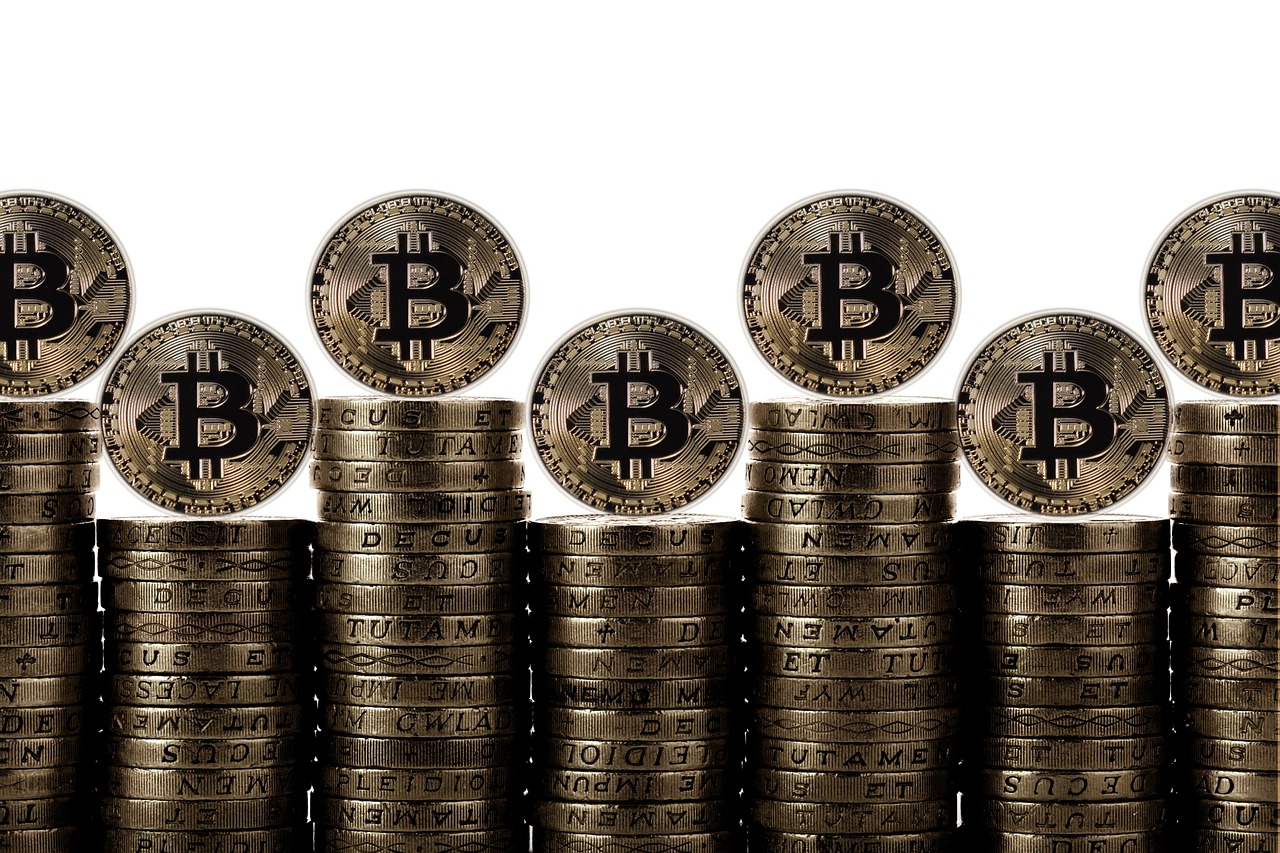
The Wrapping Process
Wrapping Ether (WETH) is a fascinating process that allows users to transform their Ether (ETH) into a more versatile asset suited for decentralized applications. So, how does this wrapping magic happen? It all begins with a simple transaction to a smart contract. When you decide to wrap your ETH, you send it to a designated smart contract. This contract acts like a vault, securely holding your Ether while issuing you the equivalent amount of WETH in return. Think of it as exchanging your cash for a gift card that can only be used at a specific store. You still have the same value, but now you can use it in ways that cash alone wouldn't allow.
The beauty of this process lies in its reversibility. If you ever feel the need to convert your WETH back to ETH, you can do so effortlessly. Just send your WETH back to the smart contract, and it will release your original Ether. This flexibility is a game changer, especially in the fast-paced world of decentralized finance (DeFi). Users can manage their assets effectively without losing control over their original holdings.
Here’s a quick breakdown of the wrapping process:
- Step 1: User initiates a transaction to the smart contract with their ETH.
- Step 2: The smart contract verifies the transaction and locks the ETH.
- Step 3: The smart contract issues WETH equivalent to the amount of ETH wrapped.
- Step 4: User receives WETH and can now use it within various DeFi applications.
This wrapping process not only enhances the usability of Ether but also plays a crucial role in increasing the liquidity of the Ethereum ecosystem. With WETH, users can participate in decentralized exchanges, lending platforms, and other DeFi protocols that require ERC-20 tokens. It's like taking your favorite snack and turning it into a multi-purpose ingredient that can be used in various recipes. The possibilities are endless!
Q1: Is there a fee for wrapping ETH?
Yes, there may be transaction fees associated with wrapping ETH, depending on the network congestion and the gas fees at the time of the transaction.
Q2: Can I unwrap WETH back to ETH anytime?
Absolutely! The process of unwrapping WETH back to ETH is straightforward and can be done at any time, allowing for flexibility in asset management.
Q3: What are the risks associated with wrapping ETH?
While wrapping ETH is generally safe, it's important to ensure that you are using a reputable smart contract. Always double-check the contract address and be aware of potential smart contract vulnerabilities.
Q4: How does WETH maintain its value?
WETH is pegged to ETH at a 1:1 ratio, meaning that for every WETH you hold, there is an equivalent amount of ETH locked in the smart contract. This ensures that WETH retains its value and can be easily converted back to ETH.
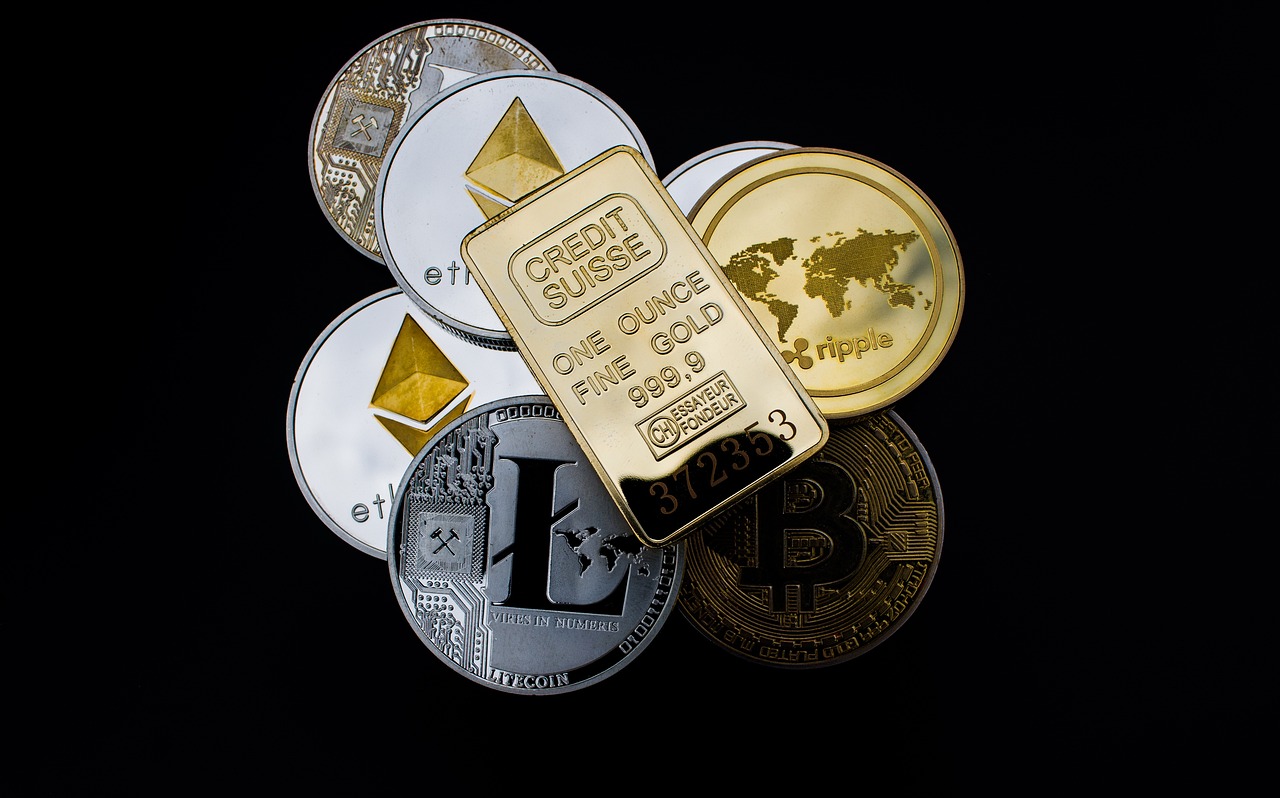
Wrapped Ether (WETH) has become a cornerstone in the world of decentralized finance (DeFi), and for good reason. One of the most significant advantages of using WETH is its compatibility with various DeFi protocols. Since WETH is an ERC-20 token, it can be seamlessly integrated into numerous decentralized applications (dApps) that rely on the ERC-20 standard. This means that users can easily lend, borrow, or trade their assets without facing compatibility issues, which is often a hurdle with native Ether (ETH).
Another key benefit of WETH is its increased liquidity. In the world of trading, liquidity refers to how easily an asset can be bought or sold without causing a significant impact on its price. WETH enhances liquidity in decentralized exchanges (DEXs), allowing traders to execute their orders smoothly and efficiently. This is particularly important in volatile markets where every second counts. With WETH, users can swap assets quickly, ensuring they capitalize on market opportunities as they arise.
Moreover, WETH transactions often incur lower transaction fees compared to transactions made with ETH. This cost-effectiveness is especially appealing for users who engage in frequent trading or interact with multiple smart contracts. The savings on transaction fees can accumulate over time, making WETH a more economical choice for active traders. Imagine spending less on fees and more on actual investments—this is the reality WETH offers.
Additionally, WETH opens the door to a plethora of DeFi opportunities. Users can participate in yield farming, liquidity mining, and other innovative financial strategies that can generate passive income. The ability to use WETH in these scenarios allows users to maximize their returns and diversify their investment strategies without being limited to traditional financial instruments.
In summary, the advantages of using WETH are clear:
- Compatibility: Works with a wide range of DeFi protocols.
- Increased Liquidity: Facilitates smoother trading experiences.
- Lower Fees: Cost-effective for frequent transactions.
- Access to DeFi Opportunities: Enables participation in innovative financial strategies.
By leveraging these benefits, users can not only enhance their trading experiences but also engage more deeply with the evolving landscape of decentralized finance. WETH is more than just a token; it’s a gateway to a world of opportunities that can redefine how we think about digital assets.
What is WETH?
WETH stands for Wrapped Ether, which is an ERC-20 token that represents Ether (ETH) on the Ethereum blockchain. It allows ETH to be used in decentralized applications (dApps).
How do I convert ETH to WETH?
You can convert ETH to WETH by sending your ETH to a smart contract that wraps it, issuing you WETH in return. This process is reversible, allowing you to convert WETH back to ETH at any time.
Why should I use WETH instead of ETH?
WETH is more compatible with DeFi protocols, offers increased liquidity, and typically incurs lower transaction fees, making it a preferred choice for many users in the crypto space.
Can I use WETH on decentralized exchanges?
Yes, WETH is widely accepted on decentralized exchanges, allowing you to trade it for other ERC-20 tokens with ease.
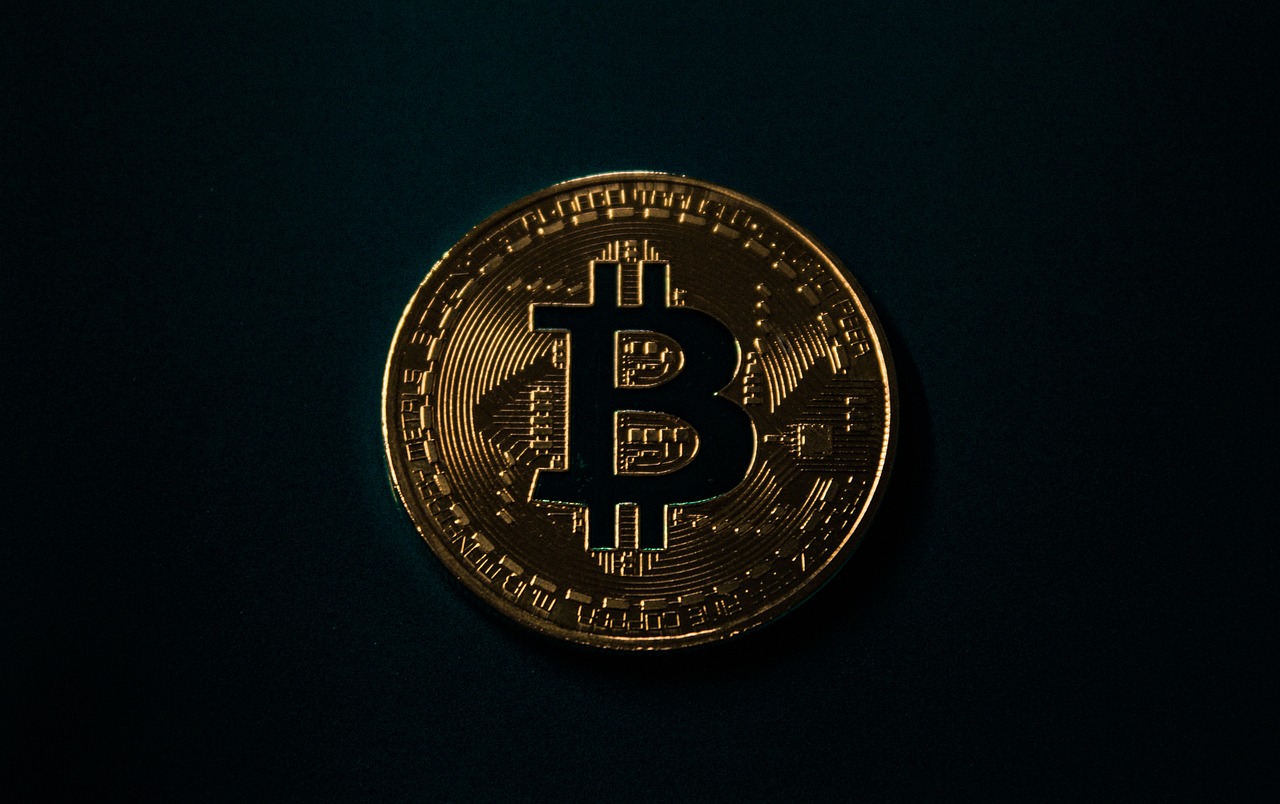
Interoperability with DeFi Protocols
Wrapped Ether (WETH) serves as a crucial bridge in the decentralized finance (DeFi) landscape, enhancing the functionality and accessibility of various protocols. By being an ERC-20 token, WETH can easily integrate with a myriad of DeFi applications, allowing users to leverage the power of Ether in ways that were previously unimaginable. This interoperability is not just a feature; it’s a game-changer that opens up a world of possibilities for both seasoned investors and newcomers alike.
Imagine trying to fit a square peg into a round hole—this is what using traditional ETH in DeFi protocols often feels like. With WETH, you have the perfect shape that fits seamlessly into the DeFi ecosystem. Whether you’re looking to lend, borrow, or trade, WETH provides the necessary flexibility that ETH alone cannot offer. This flexibility is essential for users who want to maximize their returns in a rapidly evolving market.
The ability to utilize WETH across different platforms means that users can engage in a variety of financial activities. For instance, when you wrap your ETH into WETH, you can:
- Participate in liquidity pools and earn rewards
- Trade on decentralized exchanges without the constraints of traditional ETH transactions
- Utilize WETH as collateral for loans, thus unlocking additional capital
Furthermore, the compatibility of WETH with smart contracts enhances its utility. Smart contracts can automatically execute transactions based on predefined conditions, which means that users can set up complex financial strategies without the need for intermediaries. This not only saves time but also reduces costs, making it an attractive option for those looking to navigate the DeFi space efficiently.
In summary, the interoperability of WETH with DeFi protocols is not just a technical advantage; it’s a transformative element that empowers users to explore new financial avenues. As the DeFi landscape continues to evolve, WETH stands out as a vital asset that facilitates seamless interactions across various platforms, ensuring that users can maximize their investments and participate actively in the decentralized economy.
| Question | Answer |
|---|---|
| What is Wrapped Ether (WETH)? | WETH is an ERC-20 token that represents Ether on the Ethereum blockchain, enabling it to be used in decentralized applications. |
| How do I convert ETH to WETH? | You can convert ETH to WETH by sending ETH to a smart contract, which will then issue WETH in return. |
| Can I convert WETH back to ETH? | Yes, the process is reversible, allowing you to convert WETH back to ETH whenever needed. |
| Why should I use WETH instead of ETH? | WETH offers greater compatibility with DeFi protocols, lower transaction fees, and enhanced liquidity in decentralized exchanges. |
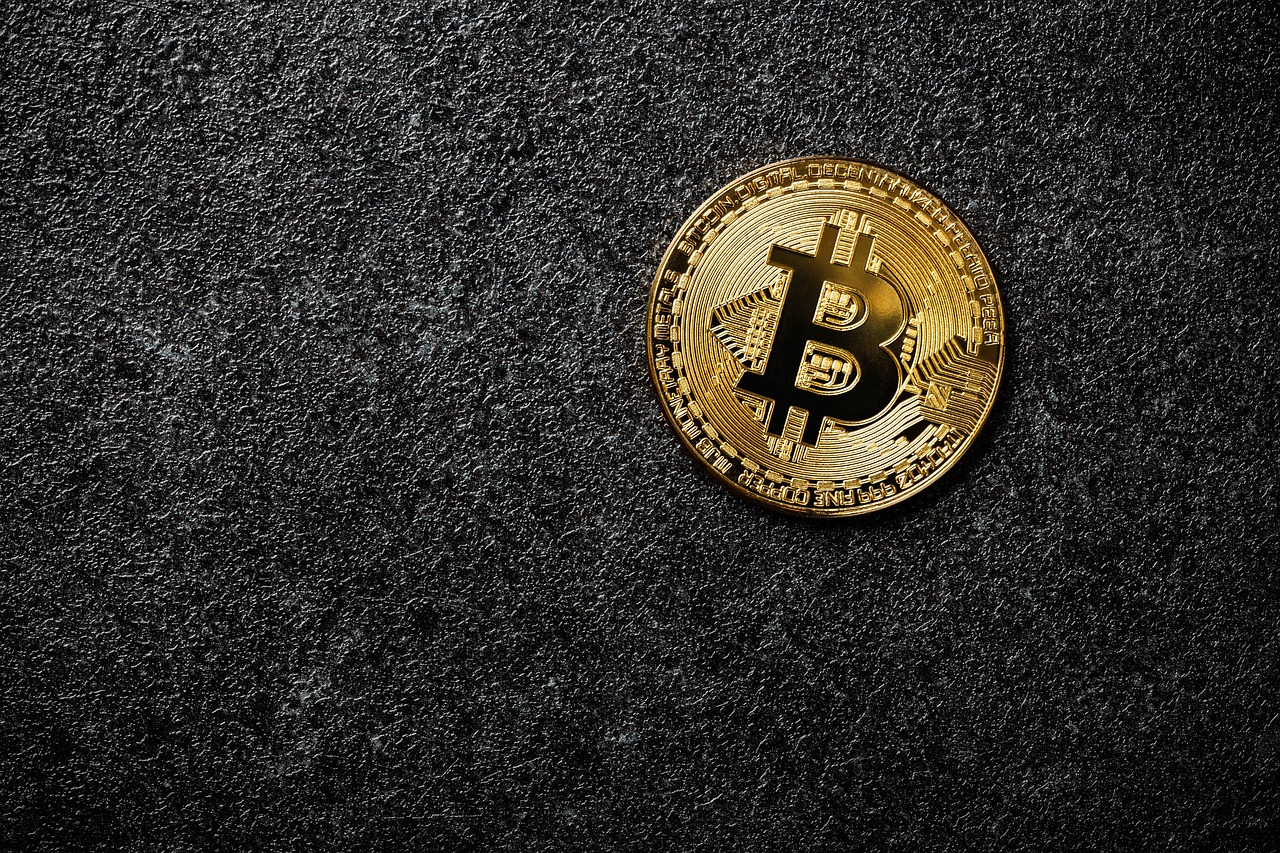
WETH vs. ETH
This article delves into Wrapped Ether (WETH), exploring its significance in the crypto ecosystem, how it functions, and its advantages over traditional Ether. We will also discuss its implications for decentralized finance.
Wrapped Ether (WETH) is an ERC-20 token that represents Ether (ETH) on the Ethereum blockchain. It enables ETH to be used seamlessly in decentralized applications, enhancing interoperability and liquidity within the Ethereum ecosystem.
WETH is created by wrapping ETH in a smart contract, converting it into an ERC-20 token. This process allows users to interact with decentralized applications and protocols that require ERC-20 tokens, expanding Ether's usability.
To wrap Ether, users send ETH to a smart contract, which in return issues WETH. This process is reversible, allowing users to convert WETH back to ETH whenever needed, ensuring flexibility in asset management.
WETH offers several advantages, including compatibility with various DeFi protocols, increased liquidity, and the ability to participate in decentralized exchanges. Its utility enhances the overall functionality of the Ethereum network.
WETH’s ERC-20 format allows it to be easily integrated into DeFi platforms. This interoperability facilitates lending, borrowing, and trading activities, making it a vital asset in the decentralized finance landscape.
While both WETH and ETH represent the same underlying asset, there are key differences that set them apart. WETH is an ERC-20 token, which means it follows the Ethereum token standard that allows it to be used in a wider array of decentralized applications (dApps) and protocols. On the other hand, ETH is the native currency of the Ethereum network, primarily used for transactions and as "gas" to power smart contracts.
One of the most significant distinctions between WETH and ETH is their usability in the DeFi ecosystem. Since many DeFi platforms are built to accept ERC-20 tokens, WETH can be utilized for various activities such as trading, lending, and staking, while ETH may not be directly accepted in these scenarios. This creates a unique advantage for WETH, making it a more versatile asset for users engaged in the booming DeFi space.
Here’s a quick comparison of WETH and ETH:
| Feature | WETH | ETH |
|---|---|---|
| Type | ERC-20 Token | Native Cryptocurrency |
| Usability in DeFi | High | Limited |
| Transaction Fees | Often Lower | Varies |
| Liquidity | Enhanced | Standard |
In summary, while both WETH and ETH serve important roles within the Ethereum ecosystem, WETH’s ERC-20 format provides it with enhanced flexibility and interoperability, making it a preferred choice for those looking to maximize their engagement with decentralized finance.
Using WETH offers several benefits, including enhanced liquidity, lower transaction fees, and greater access to DeFi opportunities. These advantages make WETH a preferred choice for many crypto enthusiasts and investors.
WETH provides increased liquidity in decentralized exchanges, allowing for smoother trading experiences. This liquidity is essential for users looking to swap assets quickly and efficiently within the Ethereum ecosystem.
Transactions involving WETH often incur lower fees compared to those with ETH, making it a cost-effective option for users engaging in frequent trades or interactions with smart contracts in the DeFi space.
- What is the main purpose of WETH? WETH allows users to utilize Ether in decentralized applications that require ERC-20 tokens.
- Can I convert WETH back to ETH? Yes, the process is reversible, and users can convert WETH back to ETH at any time.
- Are there any risks associated with using WETH? As with any cryptocurrency, risks include market volatility and smart contract vulnerabilities.
- How do I wrap my ETH into WETH? You can wrap ETH by sending it to a smart contract that issues WETH in return.
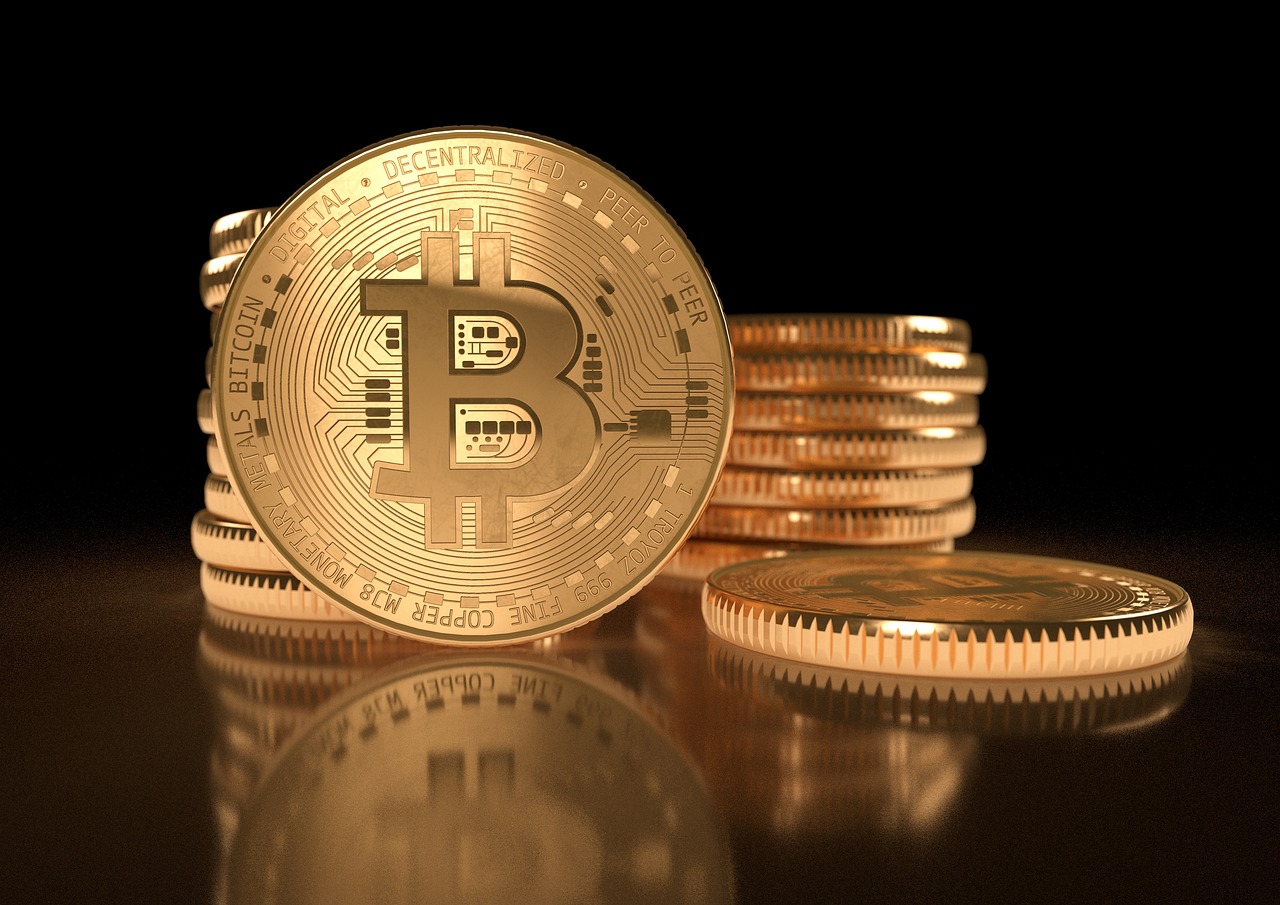
Benefits of Using WETH
Wrapped Ether (WETH) is not just another token in the vast ocean of cryptocurrencies; it brings a whole new level of utility to the table. One of the most significant advantages of using WETH is its enhanced liquidity. In the fast-paced world of decentralized exchanges (DEXs), liquidity is king. When you use WETH, you’re tapping into a pool of assets that are more readily available for trading. This means you can swap your tokens quickly and efficiently without worrying about slippage or delays. Imagine trying to cross a busy street; the more traffic there is, the harder it is to get across. WETH helps clear that traffic, making your trading experience smoother and faster.
Another compelling benefit of WETH is the potential for lower transaction fees. Traditional Ether (ETH) transactions can sometimes come with hefty gas fees, especially during peak times when the Ethereum network is congested. However, transactions involving WETH often incur lower fees, making it a cost-effective option for those who engage in frequent trades or interactions with smart contracts in the DeFi space. Think of it as choosing a fuel-efficient car for your daily commute; you save money on gas while getting to your destination just as effectively.
Furthermore, using WETH opens the door to a plethora of decentralized finance (DeFi) opportunities. With its ERC-20 format, WETH can be seamlessly integrated into various DeFi protocols, enabling users to lend, borrow, and trade with ease. This interoperability is crucial in a landscape where every second counts, and every opportunity can lead to significant financial gains. For instance, if you’re looking to earn interest on your holdings, platforms that support WETH allow you to do so without the hassle of converting back to ETH.
In addition to liquidity and cost savings, WETH offers users greater access to DeFi platforms. Since many DeFi applications are designed to work with ERC-20 tokens, WETH becomes a bridge that allows ETH holders to dive into this exciting world without needing to go through cumbersome conversion processes. This ease of access can be likened to having a VIP pass at a concert; it allows you to enjoy the best experiences without waiting in line.
To sum it all up, the benefits of using WETH are clear:
- Enhanced Liquidity: WETH increases the availability of assets for trading, making swaps quicker and more efficient.
- Lower Transaction Fees: WETH transactions often incur lower fees compared to ETH, saving you money.
- Access to DeFi Opportunities: WETH’s compatibility with ERC-20 tokens allows for seamless interactions with various DeFi platforms.
In conclusion, Wrapped Ether is not just a token; it’s a gateway to a more efficient and cost-effective way to engage with the Ethereum ecosystem. By leveraging the benefits of WETH, users can maximize their trading potential and explore the exciting world of decentralized finance.
What is the main difference between WETH and ETH?
WETH is an ERC-20 token that represents ETH on the Ethereum blockchain. While both represent the same underlying asset, WETH allows for broader use in decentralized applications.
How can I convert ETH to WETH?
You can convert ETH to WETH by sending ETH to a smart contract that issues WETH in return. This process is simple and reversible, allowing you to convert back to ETH whenever needed.
Are there any risks associated with using WETH?
As with any cryptocurrency, there are risks involved, including smart contract vulnerabilities and market volatility. However, WETH is widely used and trusted within the DeFi community.
Can I use WETH on any decentralized exchange?
Yes, WETH is compatible with many decentralized exchanges, making it a versatile asset for trading and other DeFi activities.
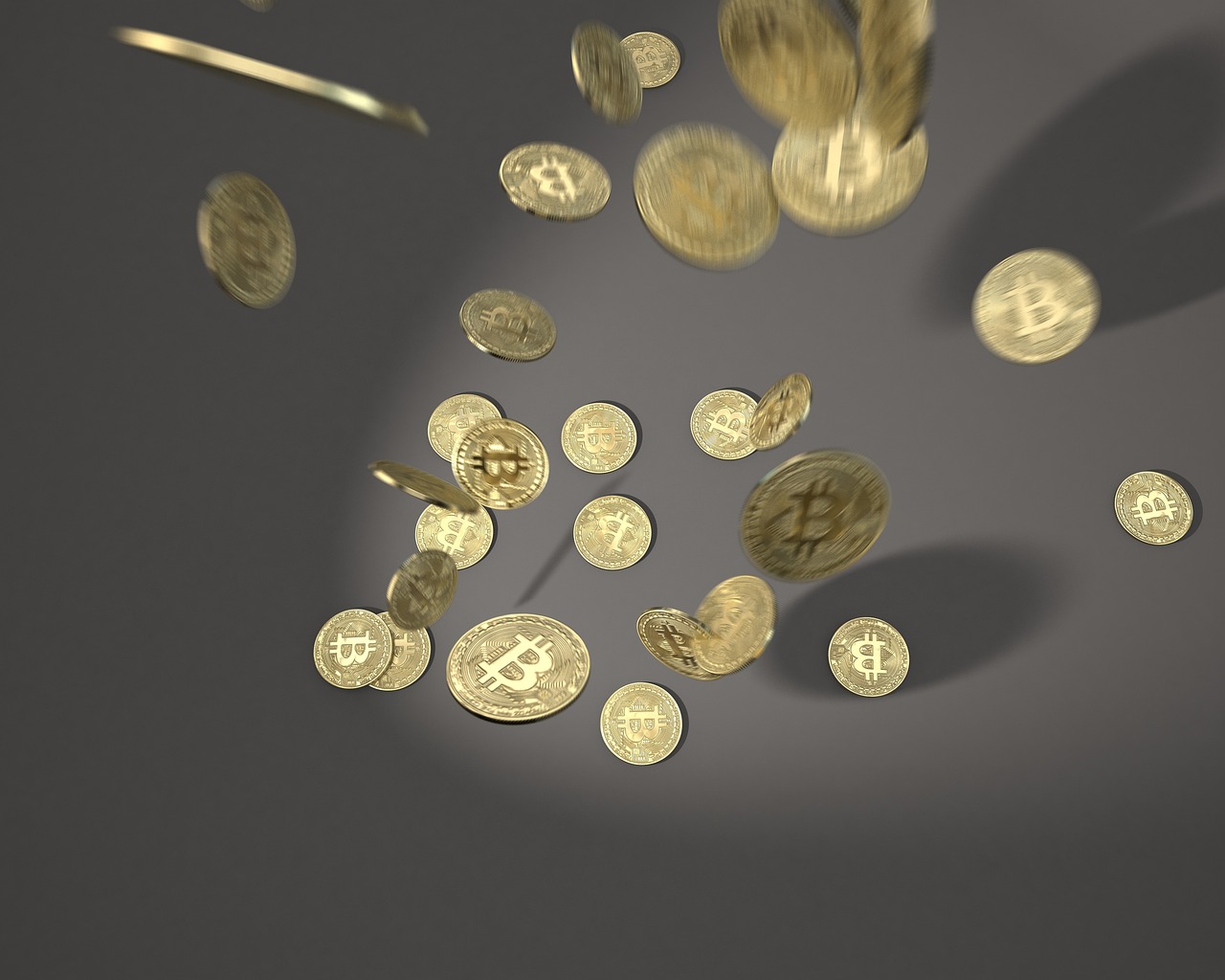
Liquidity in Decentralized Exchanges
When it comes to trading on decentralized exchanges (DEXs), liquidity plays a crucial role. Imagine trying to buy your favorite snack at a store that has shelves completely empty—frustrating, right? Similarly, low liquidity in a DEX can lead to slippage, which is when the price you pay for an asset is higher than expected due to insufficient supply. This is where Wrapped Ether (WETH) comes into play, acting as a bridge to enhance liquidity within the Ethereum ecosystem.
WETH is designed to be used seamlessly across various decentralized platforms. Its ERC-20 compatibility means that it can be easily integrated into the liquidity pools of multiple DEXs. This integration allows users to swap WETH for other tokens without the hassle of converting back to ETH first, making transactions smoother and faster. The more liquidity there is in a DEX, the easier it becomes for traders to buy and sell assets without affecting the market price significantly.
Moreover, liquidity providers can earn rewards by supplying WETH to these liquidity pools. By doing so, they not only contribute to the market's overall health but also receive a share of the trading fees generated by the platform. This creates a win-win situation: users enjoy better trading conditions, and liquidity providers earn passive income. The table below illustrates how liquidity impacts trading on DEXs:
| Liquidity Level | Impact on Trading | Trader Experience |
|---|---|---|
| High | Minimal slippage, faster transactions | Smooth and efficient |
| Medium | Some slippage, moderate transaction speed | Acceptable but can be improved |
| Low | High slippage, slow transactions | Frustrating and inefficient |
In summary, WETH significantly boosts liquidity in decentralized exchanges, providing a more favorable trading environment for all users. Whether you're a seasoned trader or just dipping your toes into the crypto waters, understanding the importance of liquidity can help you navigate the DEX landscape more effectively.
- What is the main advantage of using WETH over ETH?
WETH's ERC-20 format allows for greater compatibility with decentralized applications and protocols, enhancing its usability in the DeFi space. - Can I convert WETH back to ETH easily?
Yes, the process is reversible and straightforward. You can convert WETH back to ETH at any time through a smart contract. - How does WETH contribute to DeFi?
WETH acts as a bridge for ETH to interact with various DeFi protocols, allowing users to lend, borrow, and trade more efficiently.
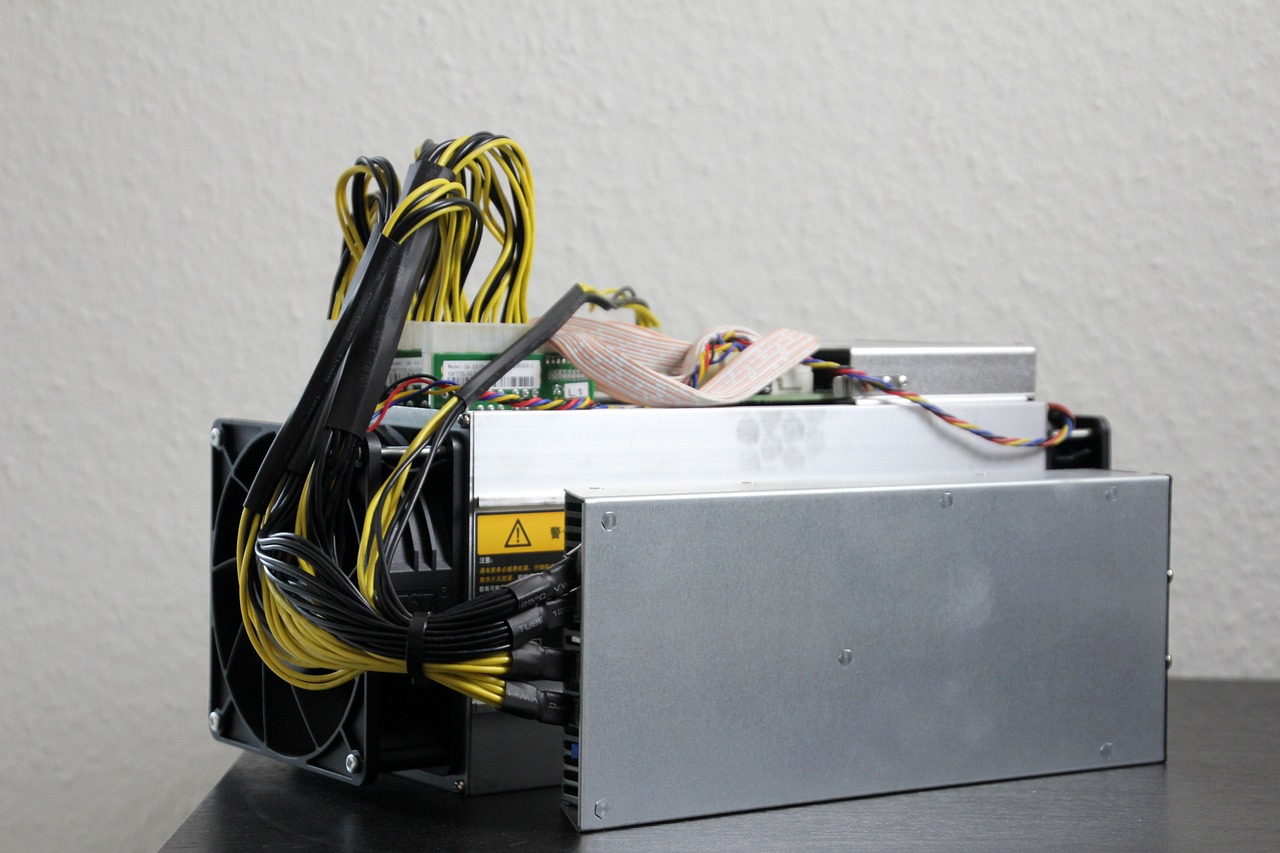
Lower Transaction Fees
This article delves into Wrapped Ether (WETH), exploring its significance in the crypto ecosystem, how it functions, and its advantages over traditional Ether. We will also discuss its implications for decentralized finance.
Wrapped Ether (WETH) is an ERC-20 token that represents Ether (ETH) on the Ethereum blockchain. It enables ETH to be used seamlessly in decentralized applications, enhancing interoperability and liquidity within the Ethereum ecosystem.
WETH is created by wrapping ETH in a smart contract, converting it into an ERC-20 token. This process allows users to interact with decentralized applications and protocols that require ERC-20 tokens, expanding Ether's usability.
To wrap Ether, users send ETH to a smart contract, which in return issues WETH. This process is reversible, allowing users to convert WETH back to ETH whenever needed, ensuring flexibility in asset management.
WETH offers several advantages, including compatibility with various DeFi protocols, increased liquidity, and the ability to participate in decentralized exchanges. Its utility enhances the overall functionality of the Ethereum network.
WETH’s ERC-20 format allows it to be easily integrated into DeFi platforms. This interoperability facilitates lending, borrowing, and trading activities, making it a vital asset in the decentralized finance landscape.
While both WETH and ETH represent the same underlying asset, WETH is an ERC-20 token, allowing for broader use in decentralized applications. Understanding the differences can help users maximize their crypto investments.
Using WETH offers several benefits, including enhanced liquidity, lower transaction fees, and greater access to DeFi opportunities. These advantages make WETH a preferred choice for many crypto enthusiasts and investors.
One of the standout advantages of using Wrapped Ether (WETH) is the associated with it. In the world of cryptocurrencies, transaction costs can often make or break a trading strategy. When you engage in frequent trades or interact with various decentralized finance (DeFi) protocols, every cent counts. WETH transactions typically incur lower fees compared to those involving ETH, which can be a game-changer for active users.
Why is this the case, you might ask? Well, it largely comes down to how WETH is structured within the Ethereum ecosystem. Since WETH is an ERC-20 token, it can be processed more efficiently by decentralized exchanges and other smart contracts, leading to reduced fees. This efficiency is particularly beneficial during times of network congestion when gas prices can spike dramatically for ETH transactions.
To illustrate the difference, consider the following table that compares the average transaction fees for ETH and WETH:
| Transaction Type | Average Fee (ETH) | Average Fee (WETH) |
|---|---|---|
| Standard Transaction | $2.50 | $1.50 |
| Decentralized Exchange Trade | $3.00 | $1.80 |
| Smart Contract Interaction | $4.00 | $2.50 |
As you can see, the cost savings can add up significantly over time, especially for users who are actively trading or utilizing DeFi platforms. Not only does this make WETH a more cost-effective option, but it also encourages more users to participate in the DeFi space without worrying about exorbitant fees eating into their profits.
In summary, the lower transaction fees associated with WETH make it an attractive choice for crypto enthusiasts looking to maximize their investments and minimize costs. By opting for WETH, users can engage more freely in the vibrant world of decentralized finance, where every transaction counts.
- What is the difference between WETH and ETH?
WETH is an ERC-20 token that represents ETH, allowing it to be used in applications that require ERC-20 tokens, while ETH is the native currency of the Ethereum blockchain. - How do I convert ETH to WETH?
You can convert ETH to WETH by sending ETH to a smart contract that wraps it into WETH, making the process simple and reversible. - Are there risks associated with using WETH?
While WETH is generally safe, users should always be cautious of smart contract vulnerabilities and ensure they are using reputable platforms.
Frequently Asked Questions
- What is Wrapped Ether (WETH)?
Wrapped Ether (WETH) is an ERC-20 token that represents Ether (ETH) on the Ethereum blockchain. It allows ETH to be used seamlessly in decentralized applications, enhancing interoperability and liquidity within the Ethereum ecosystem.
- How do I wrap my Ether into WETH?
To wrap your Ether into WETH, you simply send your ETH to a smart contract designed for this purpose. In return, the smart contract issues you WETH. This process can easily be reversed, allowing you to convert WETH back into ETH whenever you need.
- What are the advantages of using WETH over ETH?
WETH offers several advantages, including compatibility with various DeFi protocols, increased liquidity, and the ability to participate in decentralized exchanges. These features enhance the overall functionality of the Ethereum network, making WETH a preferred choice among crypto enthusiasts.
- Is WETH the same as ETH?
While both WETH and ETH represent the same underlying asset (Ether), WETH is an ERC-20 token. This means it can be used more broadly in decentralized applications, which is not the case with standard ETH.
- How does WETH increase liquidity in decentralized exchanges?
WETH increases liquidity in decentralized exchanges by allowing for smoother trading experiences. It provides a more versatile asset for trading, which is crucial for users looking to swap assets quickly and efficiently within the Ethereum ecosystem.
- Are transaction fees lower when using WETH?
Yes, transactions involving WETH often incur lower fees compared to those with ETH. This makes WETH a cost-effective option for users who engage in frequent trades or interactions with smart contracts in the DeFi space.














